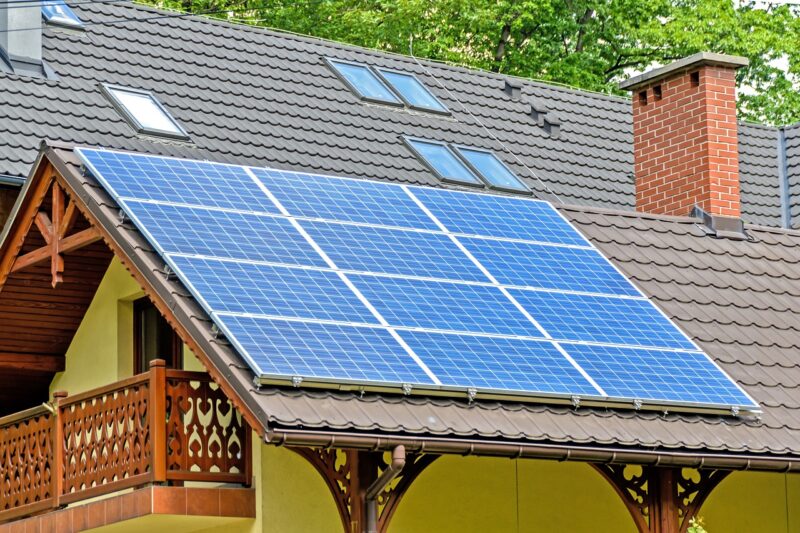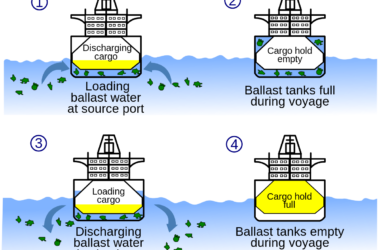Sources of Alternative Energy: In recent years, there has been a growing focus on alternative sources of energy as we look for ways to reduce our reliance on fossil fuels and mitigate the impacts of climate change. Alternative energy sources are defined as sources of energy that are renewable, sustainable, and have a lower environmental impact than traditional sources of energy. In this article, we will explore some of the most common sources of alternative energy and their potential to transform the way we power our homes, businesses, and communities.
- Solar Energy: Solar energy is perhaps the most well-known source of alternative energy. It harnesses the power of the sun to generate electricity and heat. Solar panels, also known as photovoltaic (PV) panels, are made up of solar cells that convert sunlight into electricity. This electricity can be used to power homes, businesses, and even entire communities.
One of the key advantages of solar energy is its scalability. Solar panels can be installed on a small scale, such as on a single home or business, or on a larger scale, such as in solar farms that can generate enough electricity to power entire cities. Solar energy is also a clean and renewable source of energy, meaning that it does not produce greenhouse gas emissions or contribute to climate change.
- Wind Energy: Wind energy is another popular source of alternative energy. It harnesses the power of the wind to generate electricity through wind turbines. These turbines have blades that spin when the wind blows, which powers a generator to produce electricity.
Like solar energy, wind energy is a clean and renewable source of energy that does not produce greenhouse gas emissions. Wind turbines can be installed on a small scale, such as on a single property, or on a larger scale in wind farms that can generate significant amounts of electricity. However, wind energy does require consistent wind speeds to be effective, which can limit its potential in some areas.
- Hydropower Energy: Hydropower energy is generated from the movement of water. It harnesses the energy of falling or flowing water to produce electricity. Hydroelectric power plants typically use dams to store water, which is then released to drive turbines and generate electricity.
Hydropower energy is a clean and renewable source of energy that does not produce greenhouse gas emissions. It can be used to generate electricity on a large scale, and it is often used to power entire communities. However, hydropower energy can have negative impacts on ecosystems and wildlife if not managed carefully, and it may not be feasible in all areas.
- Geothermal Energy: Geothermal energy is generated from the heat of the Earth’s core. It harnesses the natural heat of the Earth to generate electricity and heat. Geothermal power plants typically use steam from underground reservoirs to drive turbines and generate electricity.
Geothermal energy is a clean and renewable source of energy that does not produce greenhouse gas emissions. It is often used to heat buildings and homes, and it can also be used to generate electricity on a large scale. However, geothermal energy is limited to areas where there is significant geothermal activity, which can limit its potential in some regions.
- Biomass Energy: Biomass energy is generated from organic materials like wood, crops, and waste. It harnesses the energy contained in these materials to generate electricity and heat. Biomass can be burned to produce steam, which drives turbines to generate electricity.
Biomass energy is a renewable source of energy, but it is not necessarily a clean one. Burning biomass can produce greenhouse gas emissions and other pollutants if not managed carefully. However, biomass can be a useful source of energy for communities that have access to organic waste materials, and it can be used to generate electricity on a small or large scale.
Conclusion
There are a variety of alternative sources of energy that have the potential to transform the way we power our homes, businesses, and communities. These sources of energy offer a cleaner, more sustainable alternative to traditional sources of energy like coal, oil, and gas. While each source of energy has its own advantages and disadvantages, the collective potential of these sources is enormous.
In addition to the sources of energy listed above, there are also a number of emerging alternative sources of energy that are gaining attention. For example, tidal energy harnesses the power of ocean tides to generate electricity, while hydrogen fuel cells generate electricity through a chemical reaction between hydrogen and oxygen.
While alternative sources of energy offer a promising solution to the challenges of climate change and sustainability, they still face significant barriers to widespread adoption. One of the primary barriers is the cost of implementing these sources of energy. While the cost of solar and wind energy has decreased significantly in recent years, they still require significant upfront investment, which can be a barrier for many communities and businesses.
In addition, alternative sources of energy often face regulatory and political challenges. Many governments continue to provide subsidies to traditional sources of energy, which can make it difficult for alternative sources to compete. There is also often resistance from communities and stakeholders who are concerned about the potential impacts of new energy infrastructure on their local environment and quality of life.
Despite these challenges, the momentum behind alternative sources of energy continues to grow. As technology advances and costs continue to decrease, these sources of energy are becoming more accessible to communities and businesses around the world. With continued investment and support, alternative sources of energy have the potential to transform the way we power our world and build a more sustainable future.
Similar Articles
- Waterspout: A Guide to Understanding this Weather Phenomenon
- Beat the Heat: Tips for Handling Really Hot Weather
Frequently Asked Questions About Sources of Alternative Energy
What is alternative energy?
Alternative energy refers to any source of energy that is not derived from fossil fuels like coal, oil, and gas. These sources of energy are often renewable and offer a cleaner and more sustainable alternative to traditional sources of energy.
What are the most common sources of alternative energy?
The most common sources of alternative energy include solar power, wind power, hydroelectric power, geothermal power, and biomass. These sources of energy are widely used in homes, businesses, and communities around the world.
How does solar power work?
Solar power is generated by harnessing the energy of the sun through solar panels. These panels convert sunlight into electricity through a process called the photovoltaic effect.
How does wind power work?
Wind power is generated by harnessing the energy of wind through wind turbines. These turbines convert the kinetic energy of wind into electricity.
How does hydroelectric power work?
Hydroelectric power is generated by harnessing the energy of moving water through hydro turbines. These turbines convert the kinetic energy of moving water into electricity.
How does geothermal power work?
Geothermal power is generated by harnessing the heat energy of the earth’s core. This is done by drilling deep wells into the earth’s crust to access the hot water and steam that can be used to power turbines and generate electricity.
How does biomass work?
Biomass energy is generated by burning organic material like wood, agricultural waste, and other plant matter. This process releases energy in the form of heat, which can be used to generate electricity.
What is tidal energy?
Tidal energy is generated by harnessing the power of ocean tides. This is done by using underwater turbines to capture the kinetic energy of the moving water.
What are hydrogen fuel cells?
Hydrogen fuel cells generate electricity through a chemical reaction between hydrogen and oxygen. These cells are often used to power vehicles and other devices.
What are the advantages of alternative sources of energy?
Alternative sources of energy offer a cleaner and more sustainable alternative to traditional sources of energy like coal, oil, and gas. They also help to reduce greenhouse gas emissions, promote energy independence, and create new economic opportunities.
What are the challenges facing alternative sources of energy?
Alternative sources of energy face significant barriers to widespread adoption, including the cost of implementing these sources of energy and regulatory and political challenges. Many governments continue to provide subsidies to traditional sources of energy, which can make it difficult for alternative sources to compete.
What is the future of alternative sources of energy?
As technology advances and costs continue to decrease, alternative sources of energy are becoming more accessible to communities and businesses around the world. With continued investment and support, these sources of energy have the potential to transform the way we power our world and build a more sustainable future.










